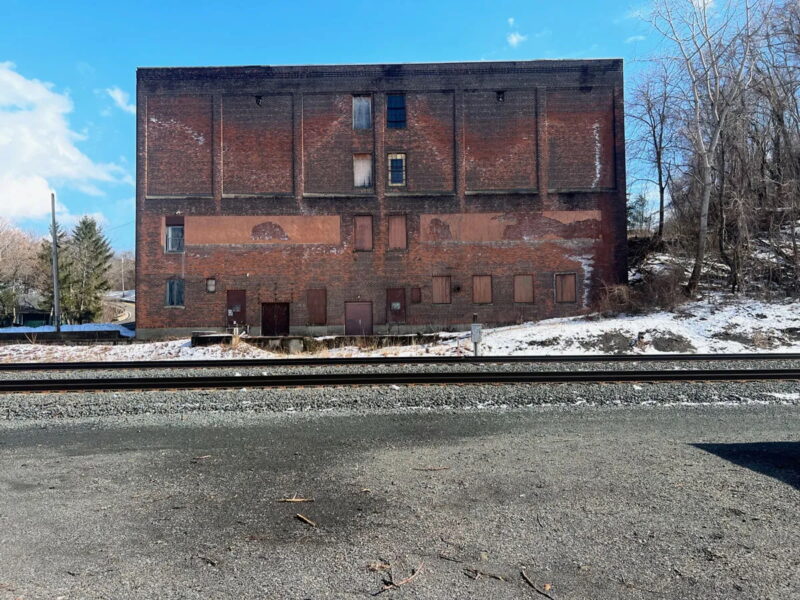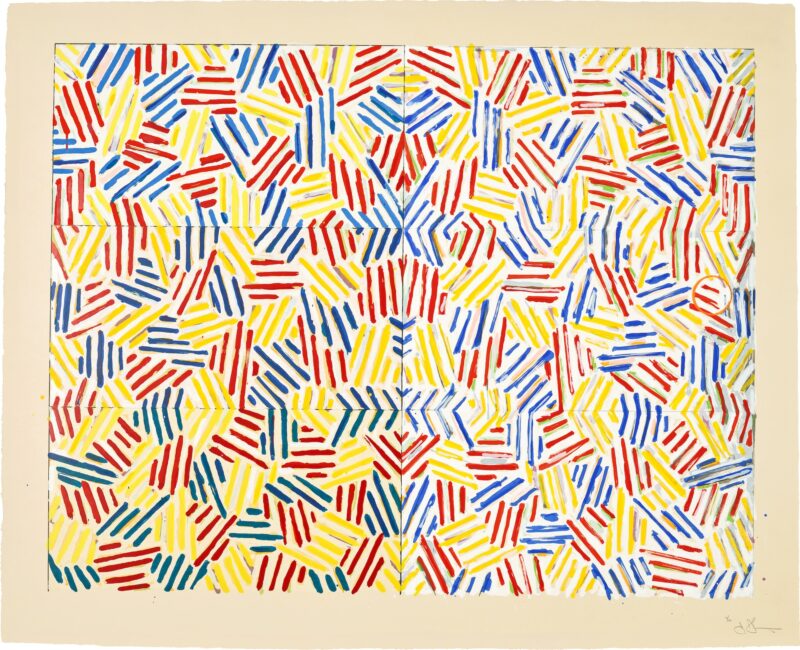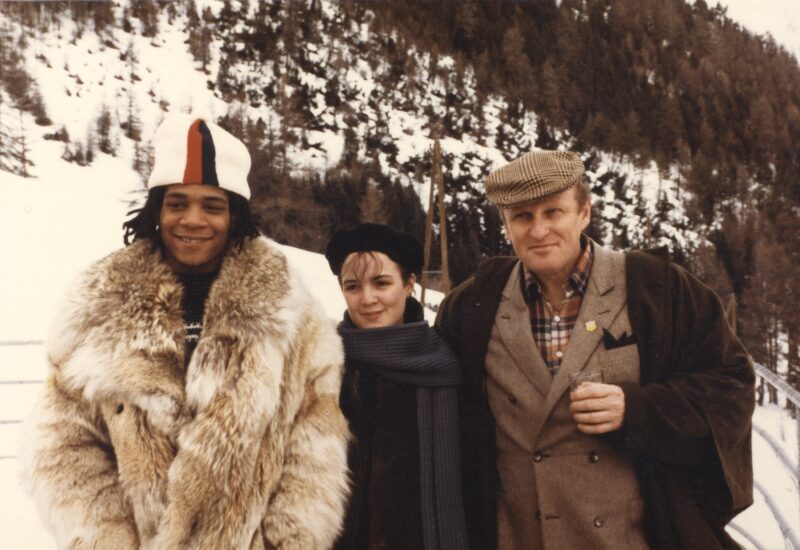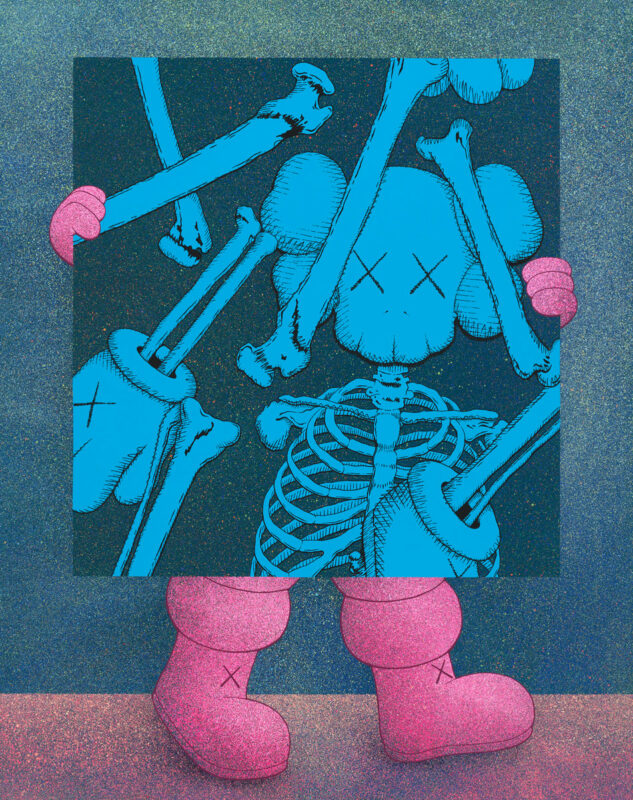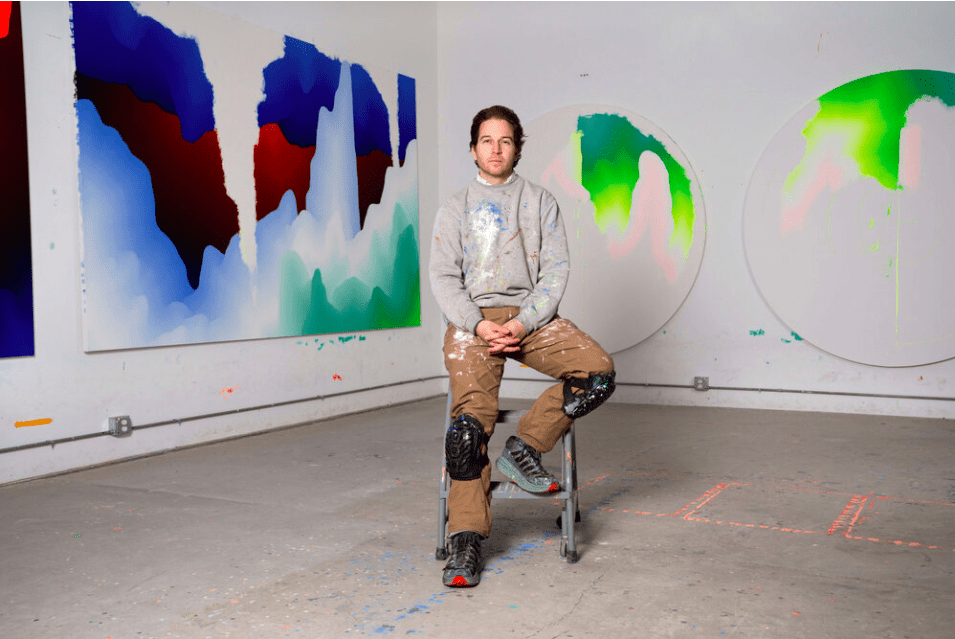
The Mass presents Room Service, a solo exhibition by Sam Friedman, curated and produced in collaboration with the Detroit-based gallery, Library Street Collective, and US-based creative agency and artist management firm, ICNCLST. The exhibition marks the artist’s first solo exhibition in Japan and will present all new canvas works from his ongoing ‘Cave Paintings’ series.

With their flowing lines and subtle colour gradations, Friedman’s works are a harmony of abstract forms that ripple across the surface of the canvas. Taking a formalist approach to painting, Friedman’s canvases are an exercise in abstraction that echo organic elements and textures found in nature. Finding inspiration in the natural landscape of his surroundings in upstate New York, his paintings are an attempt to put the images in his mind to canvas, whilst constantly adapting and changing his approach as the work unfolds. Often working on numerous canvases simultaneously, he creates iterations and sequences of works that share similar ideas, with each work becoming a unique manifestation of a concept that he can return to and examine in perpetuity.

Much like his painting process, Friedman resists concept of time and linear narratives. The seeds of his ‘Cave Paintings’ series began to emerge in his earlier representational landscape works, continuing and flowing through abstraction and repetition. With each subsequent exhibition, the series fluidly evolves and shows the subtle shifts in Friedman’s process. Due to the continuous nature of his practice, these changes move back and forth between abstraction and representation in a cyclical manner that is both methodical and repetitive, yet unrestricted and spontaneous. Speaking of this process, Friedman stated that his works start at a point from which he builds and adjusts as the idea grows, but oftentimes ‘the painting takes control [and] becomes its own boss.’ For Friedman it is the acceptance of this process and allowing the work to find its own direction that enables him to create images full of intrigue and limitless possibilities.
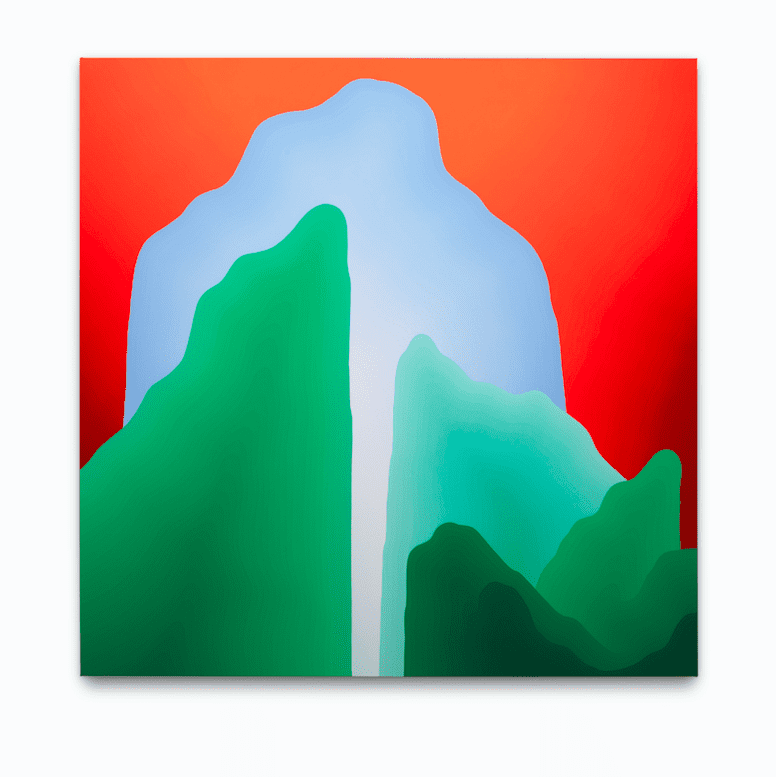
Friedman’s works follow in the tradition of American Abstract Expressionist painters such as Clyfford Still and Barnett Newman, however, his points of reference are far more wide-reaching, looking also towards representational artists, landscapes and Japanese woodblock prints. Closer inspection of Friedman’s works reveal that the colour gradations are formed from demarcated lines that seamlessly shift into one another. The lines and forms of the painted surface are reminiscent of the contour lines on a map, or the rippling raked lines of a ‘karesansui’ (Japanese Zen garden), both stylised representations of nature that have been unified into a graphic delineation. Indeed there are certain parallels between ‘karesansui’ and Friedman’s paintings as both, in effect, capture the essence of the natural landscape around them and create a meditative space wherein the repetitive act of painting can be equated to the act of raking gravel within a stone garden. The cycle of repetition and building layers of colour allows for the action of painting to become second nature and instinctual. This creates a sense of sacrosanct purity, with the dedication to his craft and the need to recreate the images within his mind almost becoming an act of spiritual devotion.
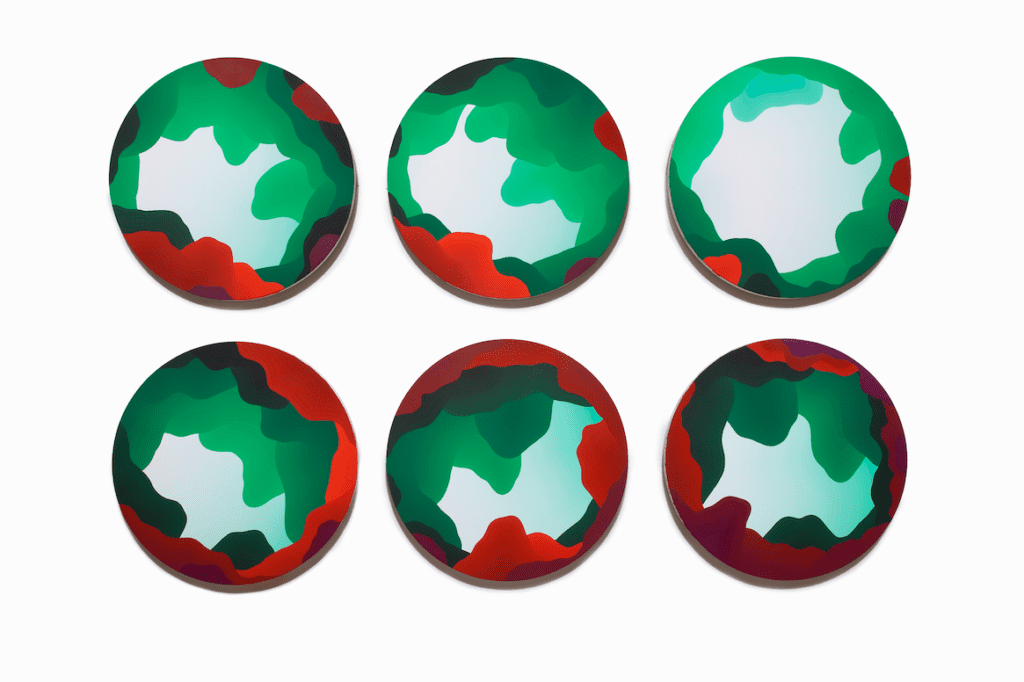
This exhibition will show a number of large scale works including a large scale tondo and, much like the cyclical nature of his painting practice, the exhibition welcomes a return to creating small-scale continuous works painted across multiple canvases. We hope you will take this opportunity to visit the exhibition and experience the serenity and complexity of the works on display.
Sam Friedman Room Service 28th May – 26th June 2022 at The Mass, 5-11-1 Jingumae,
Shibuya-ku, Tokyo 150-0001 Opening Reception: Friday 27th May, 7 – 9pm themass.jp/en/
About the artist
Sam Friedman (b. 1984, Oneonta, New York) moves between representational and abstract depictions with seeming ease and spontaneity. He has produced paintings for the greater part of his life that explore primarily the formal concerns of paint, tools and surfaces as they relate to the scale of the human body; while occasionally touching down to get blessed, tainted – or both – by the non-linear narrative of life. Friedman’s paintings pilot a plane that takes us from the ethereal to the earthly, on a ride that is neither past or present, but rather timeless, accessible, and transformatively escapist.
Friedman’s works follow in the tradition of American Abstract Expressionist painters such as Clyfford Still and Barnett Newman, however, his points of reference are far more wide-reaching, looking also towards representational artists, landscapes and Japanese woodblock prints. Closer inspection of Friedman’s works reveal that the colour gradations are formed from demarcated lines that seamlessly shift into one another. The lines and forms of the painted surface are reminiscent of the contour lines on a map, or the rippling raked lines of a ‘karesansui’ (Japanese Zen garden), both stylised representations of nature that have been unified into a graphic delineation.
Indeed there are certain parallels between ‘karesansui’ and Friedman’s paintings as both, in effect, capture the essence of the natural landscape around them and create a meditative space wherein the repetitive act of painting can be equated to the act of raking gravel within a stone garden. The cycle of repetition and building layers of colour allows for the action of painting to become second nature and instinctual. This creates a sense of sacrosanct purity, with the dedication to his craft and the need to recreate the images within his mind almost becoming an act of spiritual devotion.
